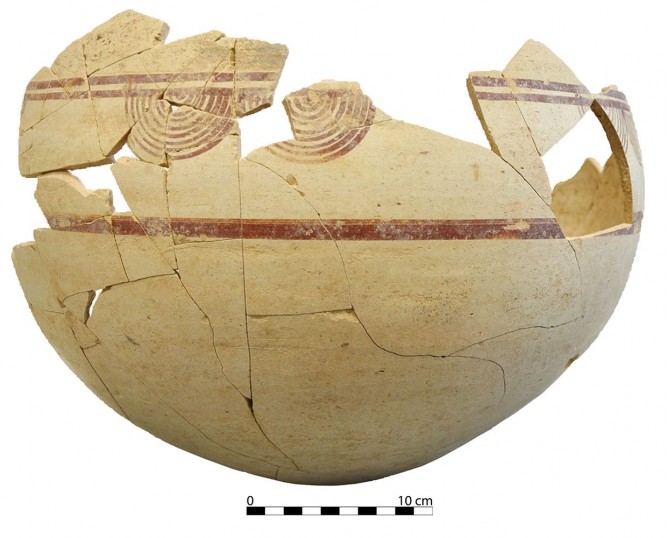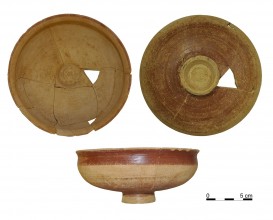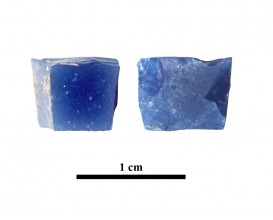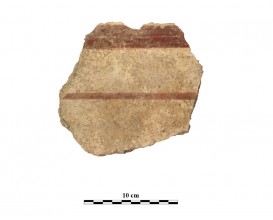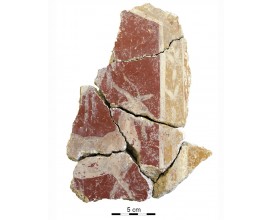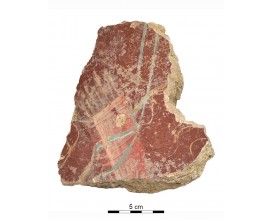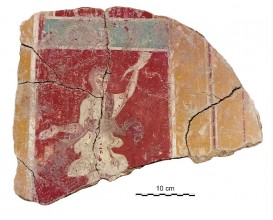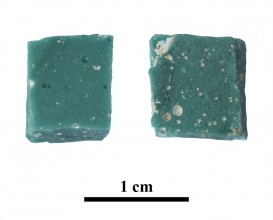Ceramic vessel 0015019146 (Cástulo, Linares, Spain)
Content analysis by GC-MS identified the presence of native sulphur This compound can be connected with purification processes related to the cleaning of objects and the celebration of rituals.
Dimensions
: 50 Centimeters
: 25 Centimeters
Materials
pottery
Temporal
: Iberian, Iberians
: 4th-3rd ct. BC
Spatial
: Cástulo
: Linares, Jaén, Spain
: WGS84
Copyrights
Creative Commons - Attribution, Non-Commercial, No Derivatives (BY-NC-ND)
References
Digital Resources
-
 Conjunto arqueológico de Cástulo-Forum MMX
Conjunto arqueológico de Cástulo-Forum MMX Creative Commons - Attribution, Non-Commercial, No Derivatives (BY-NC-ND)
Arquiberlab
http://creativecommons.org/licenses/by-nc-nd/3.0/ -
 Conjunto arqueológico de Cástulo-Forum MMX
Conjunto arqueológico de Cástulo-Forum MMX Creative Commons - Attribution, Non-Commercial, No Derivatives (BY-NC-ND)
Arquiberlab
http://creativecommons.org/licenses/by-nc-nd/3.0/ -
 Conjunto arqueológico de Cástulo-Forum MMX
Conjunto arqueológico de Cástulo-Forum MMX Creative Commons - Attribution, Non-Commercial, No Derivatives (BY-NC-ND)
Arquiberlab
http://creativecommons.org/licenses/by-nc-nd/3.0/ -
 Conjunto arqueológico de Cástulo-Forum MMX
Conjunto arqueológico de Cástulo-Forum MMX Creative Commons - Attribution, Non-Commercial, No Derivatives (BY-NC-ND)
Arquiberlab
http://creativecommons.org/licenses/by-nc-nd/3.0/ -
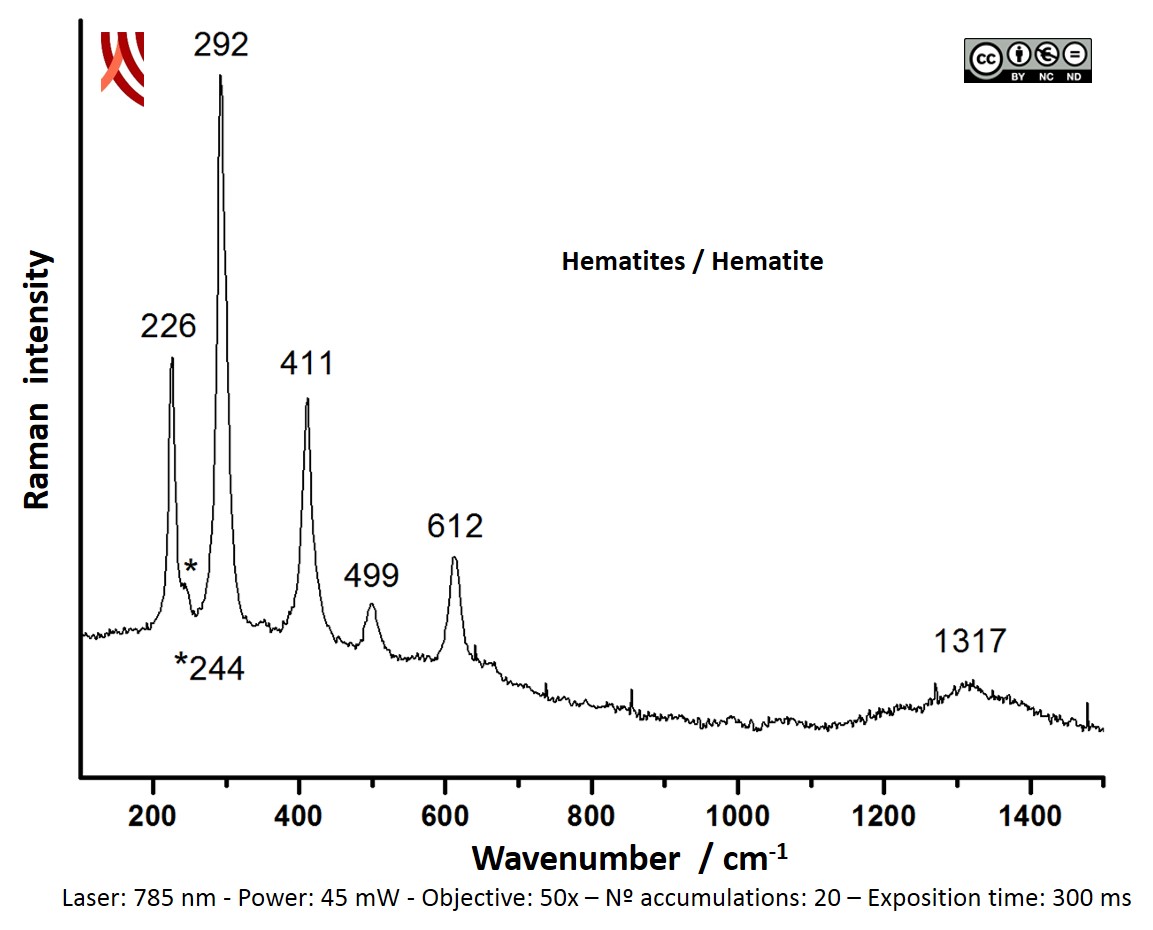 Instituto Universitario de Investigación en Arqueología Ibérica. Universidad de Jaén.
Instituto Universitario de Investigación en Arqueología Ibérica. Universidad de Jaén. Creative Commons - Attribution, Non-Commercial, No Derivatives (BY-NC-ND)
Arquiberlab
http://creativecommons.org/licenses/by-nc-nd/3.0/ - Instituto Universitario de Investigación en Arqueología Ibérica. Universidad de Jaén.
Pdf file. Average results after five analysis in the red decoration and two analysis in the ceramic paste.
Creative Commons - Attribution, Non-Commercial, No Derivatives (BY-NC-ND)
Arquiberlab
http://creativecommons.org/licenses/by-nc-nd/3.0/ -
 Instituto Universitario de Investigación en Arqueología Ibérica. Universidad de Jaén.
Instituto Universitario de Investigación en Arqueología Ibérica. Universidad de Jaén. Creative Commons - Attribution, Non-Commercial, No Derivatives (BY-NC-ND)
Arquiberlab
http://creativecommons.org/licenses/by-nc-nd/3.0/ - Modelo creado por Aldeados Imaging
Creative Commons - Attribution, Non-Commercial, No Derivatives (BY-NC-ND)
Arquiberlab
http://creativecommons.org/licenses/by-nc-nd/3.0/
Activities
Archaeometric analysis Análisis físico-químico Ceramic. Analysis of decoration and contents
| |
Raman Microscopy Mineral analysis of the red decoration. Non destructive. Surface cleaning. Sample pretreatment is not required. Direct measurement. Micro-Raman Spectroscopy (MRS) Renishaw ‘in via’ Reflex Spectrometer coupled with a confocal Leica DM LM microscope (CICT, University of Jaén), equipped with a diode laser (785 nm, 300 mW), and a Peltier-cooled CCD detector, calibrated to the 520.5 cm-1 line of silicon. | |
X-Ray Fluorescence Elemental analysis of the red decoration. Non destructive. Surface cleaning. Sample pretreatment is not required. Direct measurement. Energy dispersive X- ray fluorescence (EDXRF) EDAX (model Eagle III) fluorescence spectrometer (CITI, University of Seville). This spectrometer is equipped with a microfocus X-ray tube with an Rh anode, a polycapillary lens for X-ray focussing, and an 80 mm2 energy dispersive Si-(Li) detector. The sample chamber incorporates an XYZ motorized stage for sample positioning. A high resolution microscope is used to position the sample on the desired distance from the polycapillary. To increase the sensitivity of the low Z elements, the sample chamber can be brought under vacuum. For the analysis of the samples, a spot size of 300 μm was chosen at an operating X-ray tube voltage of 40 kV. The tube current was adapted for each sample in order to optimise the detection of X-rays; | |
Gass Chromatography-Mass Spectrometry Pottery. Lipids analysis Destructive method for the identification of the total lipid profile: fatty acids, sterols, wax esters, fatty alcohols, triacylglycerols, etc. Any remains of soil were removed with an electric hand-drill. The sample was then grinded to the appropriate size in an agatha mortar (0.25 mm). Extraction with a the mixture chloroform/methanol (CHCl3:MeOH) (2:1 v/v) assisted by ultrasound. Derivatization of lipids to trimethylsilyl derivatives (TMS). The reaction tales place at 70 ºC for 30 min using N,O-bis-(trimethylsilyl) trifluoroacetamide (BSTFA) with 1 % trimethylchlorosilane (TMCS). The sample is solved in cyclohexane and then injected in GC-MS. Chromatographic separation is performed applying an adequate temperature programme. Gas chromatography-Mass Spectrometry (GC-MS) The analyses were performed using a using a gas chromatography equipment (model Thermo TraceGC Ultra) coupled to a Thermo DC Q II mass spectrometer. Autosampler Thermo Triplus (CICT, University of Jaén). The samples were introduced by on-column injection into a 15 m x 0.25 mm I.D. fused silica capillary column, coated with poly(dimethylsiloxane) stationary phase with 0.1 μm film thickness. Helium was used as the carrier gas (purity 99.99%). |

